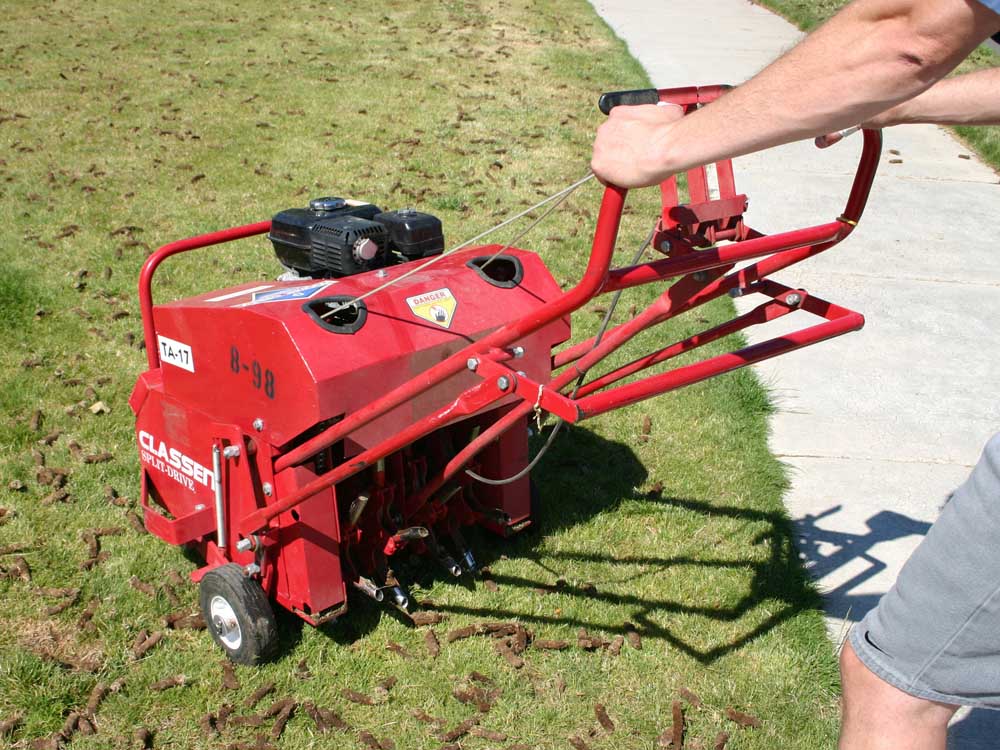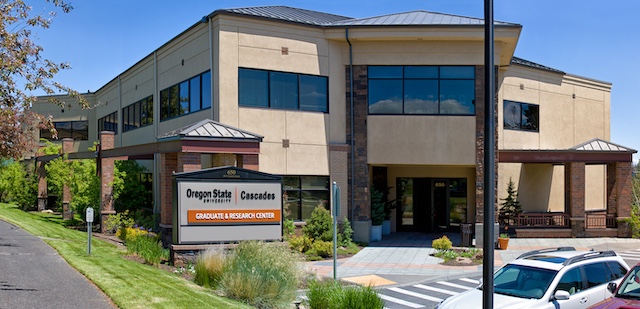Ask an expert: How to take care of your lawn this spring
Published 9:40 am Wednesday, May 3, 2017

- Aerating your lawn can relieve compaction and improve the overall health of the turfgrass. (Amy Jo Detweiler, Oregon State University/Submitted photo)
Q: What is the best way to take care of my lawn this spring?
A: When I think of lawn care in Central Oregon, there are definitely some practices that can help you to improve your stand of lawn, but it’s probably not what you’re thinking.
Due to heavy advertising, most homeowners think a healthy lawn directly correlates to fertilizer use and fertilizer use alone. Although fertilizing is one element in creating a healthy stand a grass, it is not the only tool to consider.
In fact, I would argue there are a couple of other practices here in Central Oregon that are just as important in maintaining a healthy stand of turf grass, including dethatching, mowing and aeration.
One of the most overlooked spring chores is dethatching. Thatch is a layer of dead and living grass roots and stems, and the result of a healthy lawn.
It is perfectly normal for cool-season grasses to have about a quarter of an inch of thatch. However, when the thatch layers build up to a half-inch or more, it can impede the passage of air, water and nutrients to the soil and root system below.
In other environments, thatch is easily broken down by microorganisms in the soil, keeping it to a manageable level. However, native soils in Central Oregon have very little organic material and few microorganisms, resulting in thatch layers building up quickly. This is especially true in stands of 100 percent Kentucky bluegrass.
So one way to reduce thatch is to select a blended mix of grass for your lawn if just starting out.
If you already have an established lawn, then mechanical dethatching is a good option. If your lawn feels spongy to walk on, you likely have a very thick layer of thatch.
By the way, clippings left behind from mowing do not contribute to the thatch layer. It is best to get into a routine of dethatching every other year as the lawn greens up, which is usually April through mid-May here in Central Oregon.
Rent a dethatcher from a rental supply company or hire a professional to do it for you. Once you have a dethatcher, wipe down the blades with rubbing alcohol to prevent the spread of disease. Then set the blades about a quarter-inch above a sidewalk or driveway. Avoid having the blades hit the ground; if the blades are set too low then they may cause too much damage to the turf. You want them set just low enough to pull out all dead debris.
If you have never dethatched your lawn before, you may be shocked at how much thatch pulls up. Don’t panic, the lawn will look rough for a few weeks then recover nicely. The benefit to dethatching is that it allows new lush grass shoots to fill in thick and full. It also makes it much easier for water to flow through the soil to the root system. This means a more water-efficient lawn.
Follow your dethatching routine with an application of fertilizer. If you don’t get around to dethatching this spring, you can also do it in late September or October.
In addition to dethatching, be sure that you are mowing with a sharp blade and at the right height for the grass type. Cutting the grass too short for any type of grass can be greatly detrimental to plant health.
The most common types of turf grass here (Kentucky bluegrass, perennial rye, turf-type tall fescue and fine fescue) can all be mowed at a recommended height of 1½ to 3 inches.
In addition to dethatching, consider core aerating your lawn every other year. Aeration helps to relieve compaction, remove minimal thatch and can be done any time throughout the year.
Rent a core aerator and sanitize with alcohol before use. Following aeration, you can either rake up the plugs or leave them, but they are very slow to break down in Central Oregon. Then using a compost spreader (can be rented), follow with a quarter inch application of organic rich, very fine compost. The value in adding compost is that it will “feed” the soil, which will improve soil conditions by adding microorganisms (which breaks down thatch) and nutrients, all of which benefit the overall health of the lawn.
— Amy Jo Detweiler is an associate professor of horticulture at Oregon State University Extension Service.
The most common types of turf grass here (Kentucky bluegrass, perennial rye, turf-type tall fescue and fine fescue) can all be mowed at a recommended height of 1½ to 3 inches.








